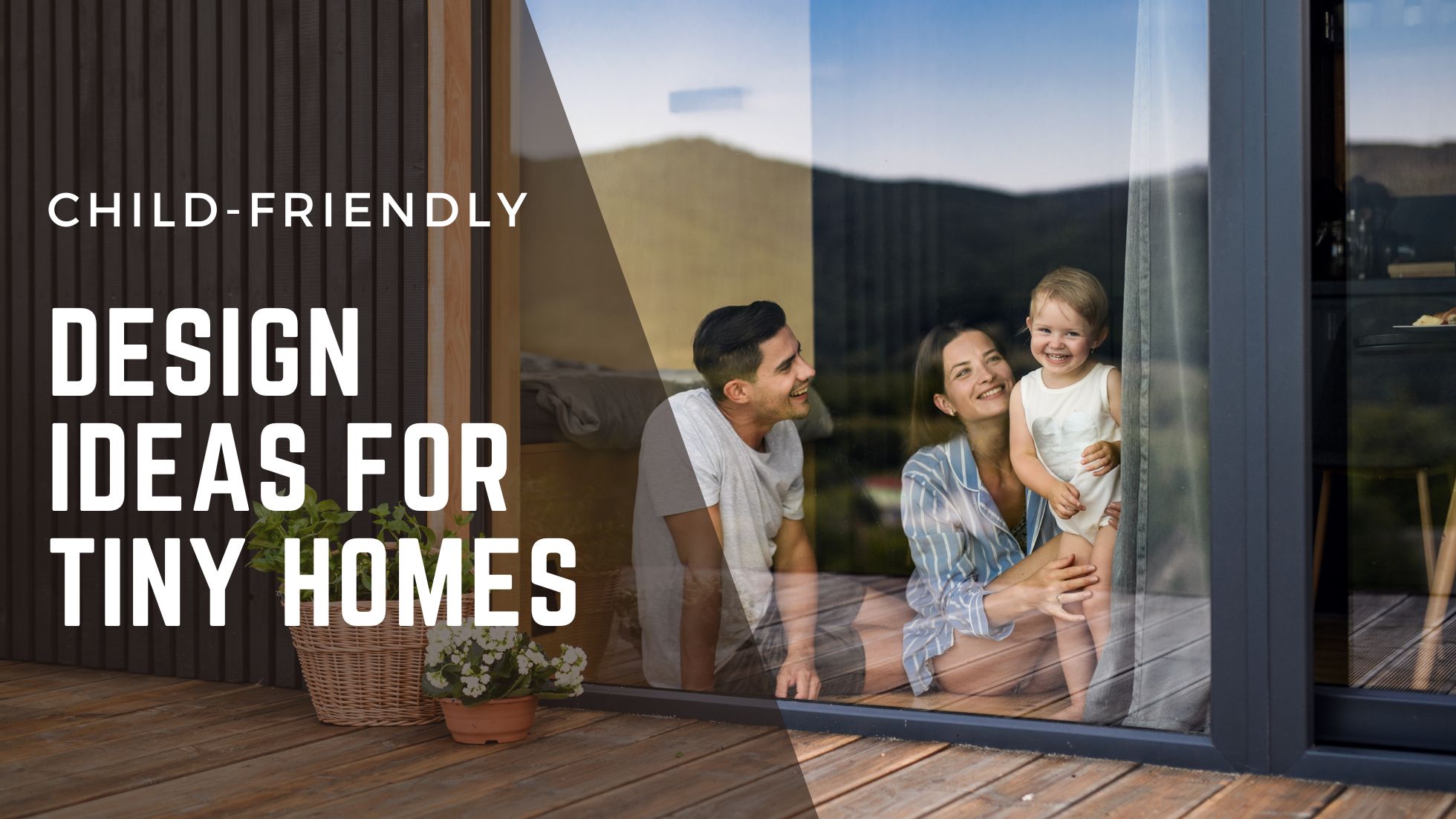
Think living in a tiny home with kids is impossible? Think again! Tiny homes may have limited space, but with a bit of creativity and thoughtful planning, they can be safe, fun, and perfectly suited for families with children. In this blog, we’ll explore various strategies to design a child-friendly tiny home, focusing on safety, play areas, and study nooks.
Designing a Safe Environment
Child-Proofing the Space
Safety is the top priority when designing a tiny home for families with children. Here are some essential tips for child-proofing your tiny home:
- Secure Furniture: Ensure that all furniture is securely anchored to the walls to prevent tipping. This is particularly important for items like bookcases and dressers.
- Rounded Edges: Opt for furniture with rounded edges to reduce the risk of injuries. For existing furniture, consider adding edge protectors.
- Non-Toxic Materials: Use non-toxic paints, finishes, and materials for all surfaces and furnishings. This minimizes exposure to harmful chemicals.
- Safe Electrical Outlets: Install child-proof covers on all electrical outlets to prevent accidental shocks.
- Stair Safety: If your tiny home has stairs or a loft, install secure railings and gates to prevent falls.
Efficient Layout
An efficient layout is important in a tiny home to ensure that the space is functional and safe. Consider the following tips:
- Open Floor Plan: An open floor plan enhances visibility and makes it easier to keep an eye on your kids.
- Defined Zones: Create distinct zones for different activities, such as sleeping, playing, and studying. This helps maintain order and reduces clutter.
- Minimal Obstacles: Keep pathways clear of obstacles to prevent tripping and ensure easy movement throughout the home.
Creating Play Areas
Multi-Functional Furniture
In a tiny home, every piece of furniture should serve multiple purposes. Here are some ideas to incorporate play areas with multi-functional furniture:
- Fold-Out Desks: Install fold-out desks that double as play tables. Fold them away when not in use to save space.
- Convertible Beds: Beds that convert into seating or play areas during the day are a great option. Loft beds with play areas underneath are especially fun for kids.
- Storage Benches: Use storage benches that double as seating and toy storage. This keeps toys organized and easily accessible.
Vertical Space Utilization
Maximizing vertical space is key in a tiny home. Here’s how to make the most of your walls:
- Wall-Mounted Shelves: Install shelves for storing toys, books, and art supplies. This keeps the floor space clear and organized.
- Hanging Baskets: Use hanging baskets for small toys and craft supplies. They’re functional and add a playful touch to the decor.
- Climbing Walls: If you’re up for a fun project, consider creating a small climbing wall. It’s a great way for kids to burn off energy without taking up much space.
Outdoor Play Spaces
If your tiny home is on a plot of land, make use of the outdoor space:
- Portable Play Equipment: Invest in portable play equipment like slides, swings, or a small sandbox. These can be moved and stored easily when not in use.
- Outdoor Storage: Use weather-resistant storage bins for outdoor toys and equipment. This keeps the outdoor area tidy and accessible.
Incorporating Study Nooks
Dedicated Study Areas
- Compact Desks: Choose compact desks that fit into small spaces. Look for designs with built-in storage for school supplies and books.
- Under-Loft Spaces: Utilize the space under a loft bed for a study area. This creates a cozy and defined workspace for your child.
- Foldable Desks: Install foldable desks that can be tucked away when not in use. This maximizes floor space and keeps the area organized.
Adequate Lighting
- Task Lighting: Use desk lamps or wall-mounted lights to ensure adequate illumination for reading and writing.
- Natural Light: Position the study area near a window to take advantage of natural light. This can improve concentration and reduce eye strain.
Organizational Tools
- Pegboards: Install pegboards above the desk for hanging supplies, notes, and schedules. This keeps the workspace tidy and efficient.
- Magnetic Boards: Use magnetic boards to display important documents, artwork, and reminders.
- Drawer Organizers: Invest in drawer organizers to keep pens, pencils, and other supplies neatly arranged.
Incorporating Personal Touches
Customizable Spaces
Let your children personalize their spaces. This fosters a sense of ownership and creativity:
- Removable Decals: Use removable wall decals to decorate the space. These can be easily changed as your child’s interests evolve.
- Cork Boards: Install cork boards where your child can pin up their artwork, achievements, and favorite pictures.
- Chalkboard Walls: Create a chalkboard wall where your child can draw, write, and express their creativity. This can be easily wiped clean and updated.
Involving Children in the Design Process
Involve your children in the design process to make the tiny home feel more like theirs:
- Choosing Colors: Let your child choose the colors for their room or play area. This makes the space more inviting and personal.
- DIY Projects: Engage your children in DIY projects, such as painting furniture or creating artwork for the walls.
Practical Tips for Tiny Home Living with Children
Routine and Organization
- Daily Clean-Up: Encourage a daily clean-up routine to keep the space tidy. Make it a fun activity by setting a timer or playing music.
- Storage Bins: Use labeled storage bins for toys, clothes, and school supplies. This makes it easy for children to find and put away their belongings.
- Weekly Purge: Conduct a weekly purge of items that are no longer needed or used. This prevents clutter from accumulating.
Flexible Spaces
Design spaces that can adapt to your family’s changing needs:
- Modular Furniture: Invest in modular furniture that can be reconfigured as your children grow. For example, a crib that converts into a toddler bed.
- Movable Partitions: Use movable partitions to create temporary rooms or play areas. These can be adjusted based on your family’s needs.
Embracing Minimalism
Teach your children the value of minimalism:
- Quality Over Quantity: Emphasize the importance of having a few high-quality toys and belongings rather than many.
- Experience Over Stuff: Focus on experiences and activities rather than material possessions. Plan family outings and activities that create lasting memories.
Conclusion
Designing a child-friendly tiny home is a rewarding challenge that calls for creativity, organization, and careful planning. By focusing on safety, including play areas and study nooks, and getting your kids involved in the design process, you can create a space that’s both practical and enjoyable for the whole family. With these tips and ideas, your tiny home can become a cozy, fun, and inspiring place for your children to grow and thrive. Happy tiny living!
